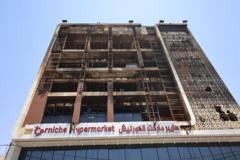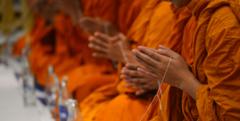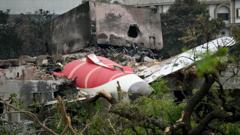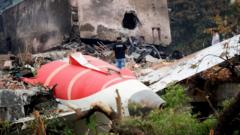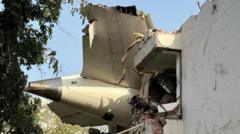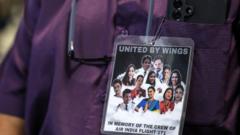The recent deadly crush at New Delhi Railway Station, which left 18 dead and many injured, has raised questions about safety protocols and government accountability as families mourn their losses in this tragic incident.
Tragedy Strikes as Crush Claims Lives at New Delhi Railway Station

Tragedy Strikes as Crush Claims Lives at New Delhi Railway Station
Families grieve after stampede at Delhi train station during peak travel time.
On a seemingly ordinary morning at New Delhi Railway Station, chaos turned deadly when a crush resulted in the tragic deaths of at least 18 people and left a number of others injured. The incident unfolded on Saturday night amid overwhelming crowds due to train delays and the impending departure of a train for the significant Kumbh Mela festival in Prayagraj. Eyewitness accounts narrate a hectic scene sparked by the fall of a passenger on the stairs, igniting panic among the masses.
Officials have announced an investigation into the disaster, alongside assurances of compensation for victims' families. Critics, however, are questioning the preparedness of Indian Railways, which they believe failed to manage the large crowds effectively. “Let the investigation be completed first,” remarked Pankaj Gangwar, a senior security official, when queried about the situation.
Sadly, tragedies like these are not new to India, where overcrowding often leads to disastrous outcomes during major events. Just last month, a similar incident at the Kumbh Mela claimed 30 lives, highlighting a concerning trend.
Families affected by the stampede have described their anguish. Bipin Jha witnessed the horrifying collapse as he awaited his wife, who tragically died in front of him, leaving him burdened with guilt. Others recounted the terrifying moments where they felt an overwhelming push from the crowd and struggled for breath as bodies piled around them.
Many relatives aired their frustrations with the authorities and emergency response times. Injured individuals like Umesh Giri lamented the lack of immediate help, as he exhaustedly sought assistance from officers amidst the chaos. The overwhelming crowd caused many to become trapped, as they were unable to navigate the dangerous jam across the station’s platforms and stairs.
The deceased were transported to Lok Nayak Jai Prakash Hospital, which noted an influx of victims and frustratingly inadequate medical resources. Families lined up, expressing their grief over inappropriate conditions where multiple patients were crammed into single hospital beds, a situation recounted by relatives waiting to collect their loved ones.
As mourners gather to remember the dead, the incident serves as a stark reminder of the vulnerabilities faced in crowded public spaces and prompts urgent calls for improved safety measures. The community mourns not only for lives lost but for the failures in providing adequate safety during such gatherings.
Officials have announced an investigation into the disaster, alongside assurances of compensation for victims' families. Critics, however, are questioning the preparedness of Indian Railways, which they believe failed to manage the large crowds effectively. “Let the investigation be completed first,” remarked Pankaj Gangwar, a senior security official, when queried about the situation.
Sadly, tragedies like these are not new to India, where overcrowding often leads to disastrous outcomes during major events. Just last month, a similar incident at the Kumbh Mela claimed 30 lives, highlighting a concerning trend.
Families affected by the stampede have described their anguish. Bipin Jha witnessed the horrifying collapse as he awaited his wife, who tragically died in front of him, leaving him burdened with guilt. Others recounted the terrifying moments where they felt an overwhelming push from the crowd and struggled for breath as bodies piled around them.
Many relatives aired their frustrations with the authorities and emergency response times. Injured individuals like Umesh Giri lamented the lack of immediate help, as he exhaustedly sought assistance from officers amidst the chaos. The overwhelming crowd caused many to become trapped, as they were unable to navigate the dangerous jam across the station’s platforms and stairs.
The deceased were transported to Lok Nayak Jai Prakash Hospital, which noted an influx of victims and frustratingly inadequate medical resources. Families lined up, expressing their grief over inappropriate conditions where multiple patients were crammed into single hospital beds, a situation recounted by relatives waiting to collect their loved ones.
As mourners gather to remember the dead, the incident serves as a stark reminder of the vulnerabilities faced in crowded public spaces and prompts urgent calls for improved safety measures. The community mourns not only for lives lost but for the failures in providing adequate safety during such gatherings.

